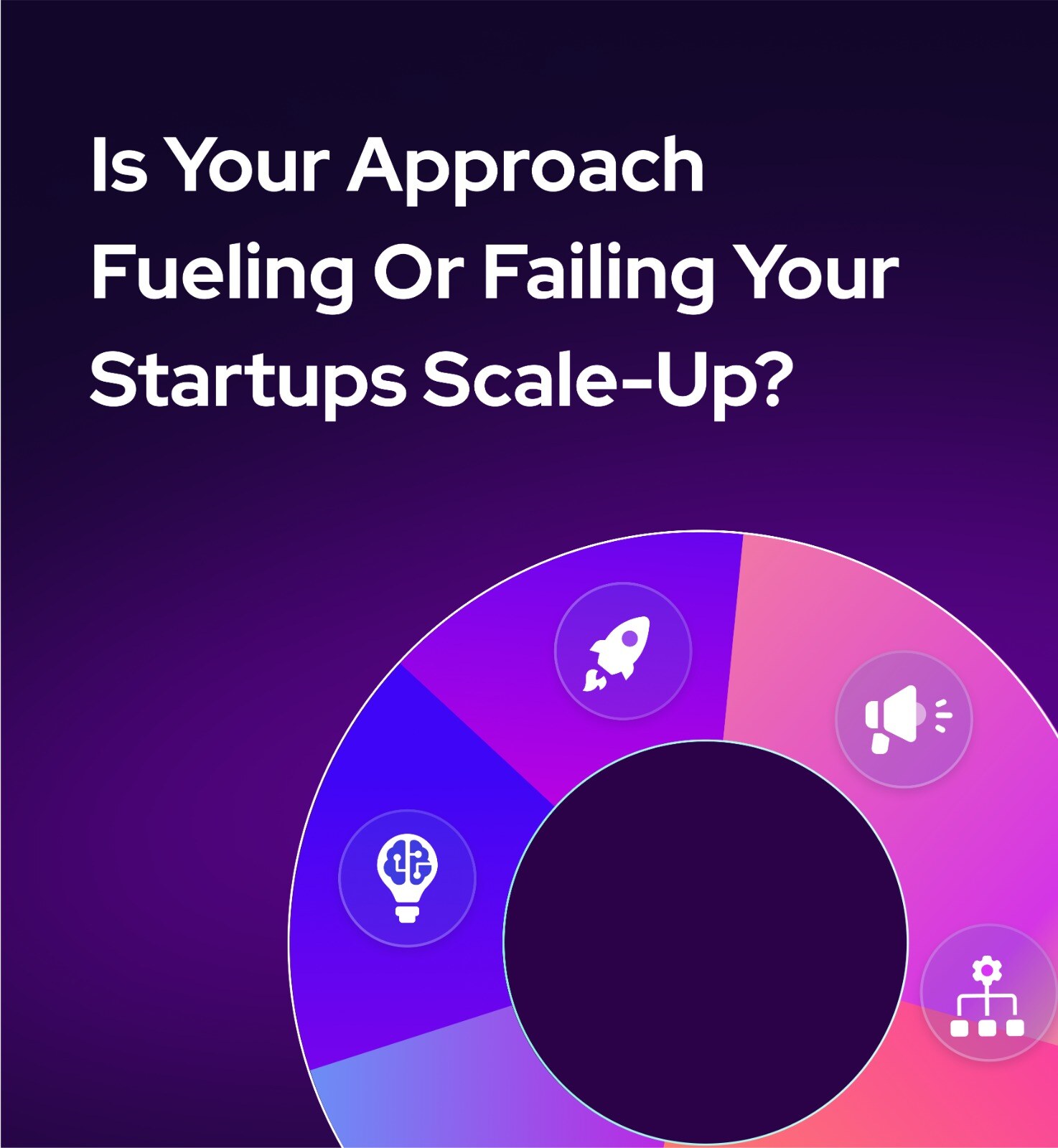The Role of Product-Led Growth in Scaling Your SaaS Startup
In the competitive landscape of SaaS, finding the right growth strategy can make the difference between stagnation and exponential success. Enter product-led growth (PLG), a go-to-market strategy that's revolutionizing how SaaS companies scale. This approach puts your product at the forefront of your customer acquisition and retention efforts, leveraging its value to drive sustainable growth.
But how exactly does product-led growth contribute to scaling your SaaS startup? Let's dive deep into this strategy and explore its crucial role in your scaling journey.
Understanding Product-Led Growth
Before we delve into its role in scaling, let's clarify what product-led growth means. PLG is a business methodology in which user acquisition, expansion, conversion, and retention are all driven primarily by the product itself. It relies on the product to do the selling, converting, and upgrading, rather than a heavy emphasis on marketing or sales teams.
In a product-led model, the product itself is the main driver of customer acquisition and retention. This approach contrasts with sales-led or marketing-led strategies, where the primary focus is on outbound sales efforts or marketing campaigns to attract and convert customers.
Key Characteristics of Product-Led Growth:
- Emphasis on User Experience: The product is designed to be intuitive and provide immediate value to users.
- Freemium or Free Trial Models: Users can often access basic features for free, with the option to upgrade for more advanced functionality.
- Self-Service Onboarding: Users can sign up and start using the product without interacting with a sales representative.
- Viral Loop Integration: The product includes features that encourage existing users to invite new users.
- Data-Driven Decision Making: Product usage data informs product development and growth strategies.
How Product-Led Growth Fuels Scaling
Now that we understand what PLG is, let's explore how it contributes to scaling your SaaS startup:
-
Lower Customer Acquisition Costs (CAC)
One of the most significant advantages of product-led growth is its potential to dramatically lower customer acquisition costs. Traditional sales-led approaches often involve expensive outbound sales teams and lengthy sales cycles. In contrast, PLG allows users to discover, try, and adopt your product with minimal intervention from your team.
By focusing on creating a product that sells itself, you can reduce the resources needed for sales and marketing. This efficiency is crucial for scaling, as it allows you to reinvest more of your revenue into product development and other growth initiatives.
-
Faster User Adoption
Product-led growth strategies typically involve freemium models or free trials, allowing users to experience your product's value before committing to a purchase. This approach can significantly speed up the adoption process.
When users can immediately access and use your product, they can quickly determine if it meets their needs. If your product delivers on its promise, users are more likely to become paying customers and advocates for your solution. This faster adoption rate can lead to exponential growth as satisfied users spread the word about your product.
-
Enhanced User Experience
In a product-led model, the user experience is paramount. Your product needs to be intuitive, easy to use, and provide immediate value to encourage adoption and retention. This focus on user experience can lead to higher customer satisfaction and lower churn rates.
As you scale, maintaining a strong emphasis on user experience ensures that your product remains competitive and continues to meet user needs, even as your user base grows and diversifies.
-
Data-Driven Insights
Product-led growth relies heavily on data. By closely monitoring how users interact with your product, you can gain valuable insights into user behavior, preferences, and pain points. These insights can inform product development, helping you prioritize features that will have the most significant impact on user satisfaction and retention.
As you scale, this data-driven approach becomes even more critical. It allows you to make informed decisions about where to invest your resources for maximum impact, ensuring that your growth is sustainable and aligned with user needs.
-
Scalable Customer Success
In a product-led model, customer success is built into the product itself. Instead of relying solely on customer success teams to guide users, your product includes in-app onboarding, tooltips, and other features that help users get the most out of your solution.
This approach to customer success is highly scalable. As your user base grows, you can continue to provide a high level of support without necessarily expanding your customer success team at the same rate. This scalability is crucial for maintaining profitability as you grow.
-
Viral Growth Potential
Many product-led growth strategies incorporate viral elements into the product itself. For example, users might be incentivized to invite colleagues or share content created within the app. These viral loops can lead to exponential growth without additional marketing spend.
As you scale, these viral elements can become increasingly powerful. Each new user becomes a potential advocate for your product, creating a snowball effect that can dramatically accelerate your growth.
Implementing Product-Led Growth for Scaling
Now that we've explored how product-led growth contributes to scaling, let's discuss how to implement this strategy effectively:
- Focus on Core Value
Your product should deliver its core value as quickly as possible. Identify your product's "aha moment" – the point where users realize its value – and streamline your onboarding process to get users there fast.
- Implement a Freemium or Free Trial Model
Allow users to experience your product's value before asking them to pay. This could be through a freemium model with limited features or a time-limited free trial of the full product.
- Prioritize User Onboarding
Create a frictionless onboarding experience. Use in-app tutorials, tooltips, and guided tours to help users understand how to use your product effectively.
- Use Product Analytics
Implement robust analytics to track how users interact with your product. Use these insights to inform product development and identify opportunities for improvement.
- Build Viral Loops
Incorporate features that encourage users to invite others or share their work. This could include referral programs, collaboration features, or social sharing options.
- Align Your Team
Ensure that all departments, from product development to marketing, understand and support your product-led growth strategy. This alignment is crucial for consistent execution as you scale.
Measuring the Success of Your Product-Led Growth Strategy
As with any growth strategy, it's essential to measure the success of your product-led growth efforts. Here are some key metrics to track:
- Product Qualified Leads (PQLs): Users who have experienced your product's value and exhibited behaviors that indicate they're likely to become paying customers.
- Time to Value: How quickly users reach the "aha moment" where they realize your product's value.
- User Activation Rate: The percentage of new users who take key actions that indicate they're actively using your product.
- Feature Adoption: Which features are most popular among your users, and which might need improvement or better promotion.
- Net Dollar Retention (NDR): A measure of revenue growth from existing customers, accounting for both expansions and churn.
- Viral Coefficient: The number of new users that each existing user brings in.
- Customer Acquisition Cost (CAC): The cost of acquiring a new customer, which should decrease over time with an effective PLG strategy.
Challenges and Considerations
While product-led growth can be a powerful strategy for scaling, it's not without its challenges:
- Product Complexity: PLG works best for products that users can understand and derive value from quickly. If your product is complex or requires significant setup, you may need to combine PLG with other strategies.
- Target Market: B2C and SMB-focused products often lend themselves more naturally to PLG. Enterprise sales may still require a more traditional sales approach, although PLG can still play a role.
- Monetization Strategy: Balancing free and paid features can be tricky. You need to offer enough value in your free tier to attract users, but also have a clear value proposition for paid upgrades.
- Support Scalability: As your user base grows, so will the demand for support. Ensure you have scalable support systems in place.
- Product Quality: In a product-led model, your product needs to be rock-solid. Any significant bugs or usability issues can quickly lead to user churn.
Conclusion
Product-led growth has emerged as a powerful strategy for scaling SaaS startups. By putting your product at the center of your growth efforts, you can lower acquisition costs, speed up adoption, enhance user experience, and create potential for viral growth. However, successful implementation requires a deep understanding of your users, a commitment to continuous product improvement, and the ability to leverage data effectively.
As you embark on your scaling journey, consider how product-led growth could fit into your overall strategy. Remember, it's not an all-or-nothing approach – many successful SaaS companies combine elements of product-led growth with other strategies to create a hybrid model that suits their specific needs and market.
By focusing on creating a product that truly delivers value and empowering users to experience that value quickly and easily, you're setting the stage for sustainable, scalable growth. In the competitive world of SaaS, that could make all the difference in your scaling success.
Disclaimer
This blog post was initially generated using Inno Venture AI, an advanced artificial intelligence engine designed to support digital product development processes. Our internal team has subsequently reviewed and refined the content to ensure accuracy, relevance, and alignment with our company's expertise.
Inno Venture AI is a cutting-edge AI solution that enhances various aspects of the product development lifecycle, including intelligent assistance, predictive analytics, process optimization, and strategic planning support. It is specifically tailored to work with key methodologies such as ADAPT Methodology® and Scaleup Methodology, making it a valuable tool for startups and established companies alike.
Inno Venture AI is currently in development and will soon be available to the public. It will offer features such as intelligent product dashboards, AI-enhanced road mapping, smart task prioritization, and automated reporting and insights. If you're interested in being among the first to access this powerful AI engine, you can register your interest at https://innoventure.ai/.

Take The Test
You May Also Like
These Related Stories

Lean Product Process: Scale Your Startup Successfully

Scaling Scrum: Implementing Scrum of Scrums for Larger Startups

